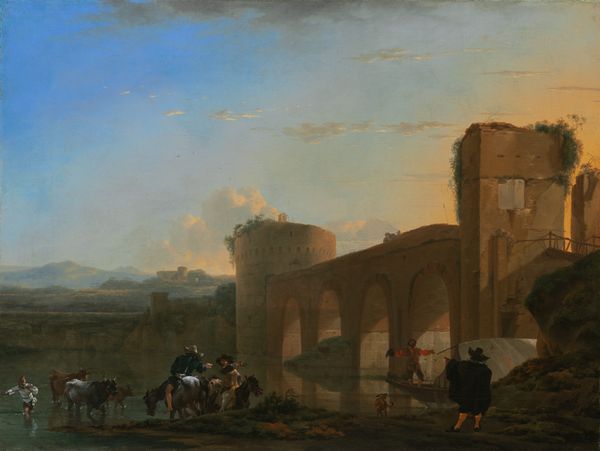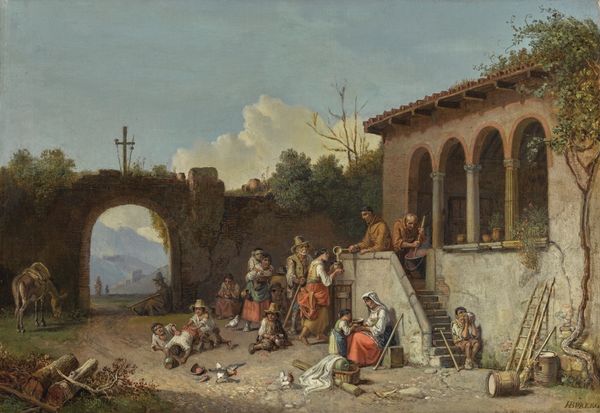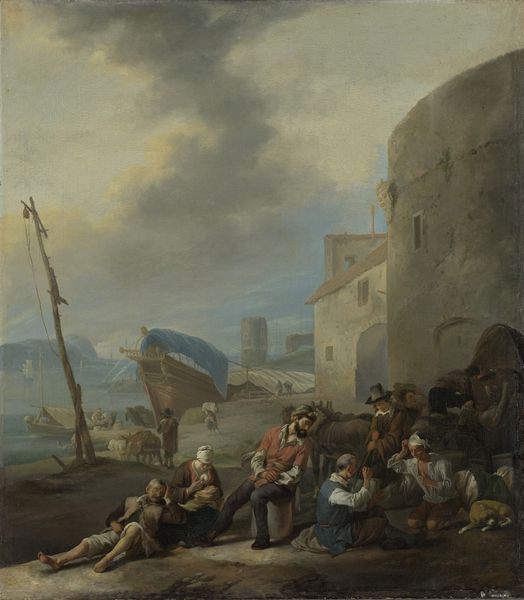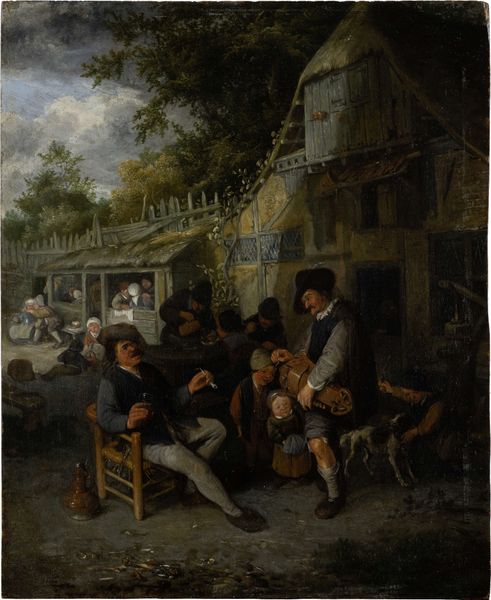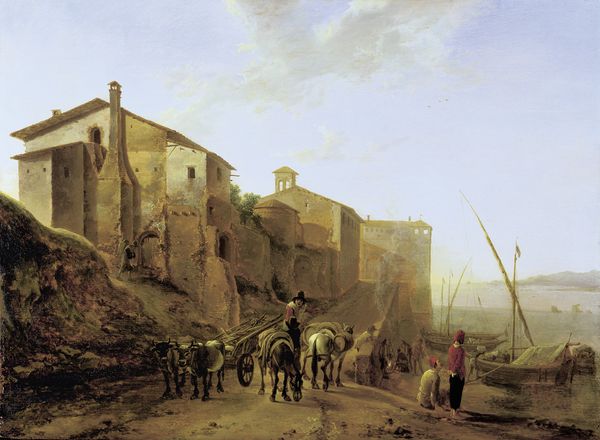
painting, oil-paint
#
portrait
#
baroque
#
painting
#
oil-paint
#
oil painting
#
cityscape
#
genre-painting
#
realism
Dimensions: height 74 cm, width 61 cm, depth 6.5 cm
Copyright: Rijks Museum: Open Domain
Curator: Ah, here we have Thomas Wijck’s, View of a Levantine Port. Painted sometime between 1640 and 1677, this oil-on-canvas work captures a bustling scene, reflecting the period’s fascination with international trade and travel. It is currently held here at the Rijksmuseum. Editor: Immediately, I'm struck by the contrast. The foreground is dark, almost cavernous, filled with shadowy figures amidst crates and barrels. But then, there's this sliver of bright, airy landscape visible through the archway – it makes you want to step right into the painting, doesn't it? Curator: Precisely. Wijck masterfully uses the architecture as a frame, highlighting the transition from the familiar, enclosed mercantile world to the exotic "Levant." We must consider how the port becomes a site of cultural exchange, and, arguably, exploitation, a crucial component of early modern economic policy. The arrangement of laborers invites us to ask, how do the bodies performing the labor create these cultural spaces? Editor: Exploitation is heavy, but true. Still, it feels like an adventure too, with the light in the background. It reminds me of sneaking away on a trip with my friends when I was younger. Curator: We shouldn’t romanticize; trade in the Levant involved power imbalances rooted in colonialism, slavery, and the extraction of resources. Note, though, that the artist employs realism while crafting a portrait-style scene which indicates a unique artistic perspective worth discussing further in regards to his overall political intent. Editor: Agreed, it's definitely more complex than just a pretty picture of a busy harbor. And I guess the red fabric draped over those barrels almost makes it look like something precious or illicit is being smuggled, a sense of secrecy, maybe? Curator: Certainly. The Levantine context speaks to this – the allure of the "Orient," often built on orientalist fantasies that legitimized European intervention. So we must examine, how does this imagery create cultural identity, particularly for European audiences? The laborers depicted are arranged so that European subjects see them in the process of exporting valuable raw materials for domestic, cultural development. Editor: Looking at this work, I get caught in the contrast between the dim space in the foreground and the light and landscape we see in the distance. Thomas Wyick truly captures not only a moment in time but an atmosphere of an emerging world. Curator: Yes, ultimately this work is about global interconnectedness, even with the shadows lurking in plain sight.
Comments
No comments
Be the first to comment and join the conversation on the ultimate creative platform.



